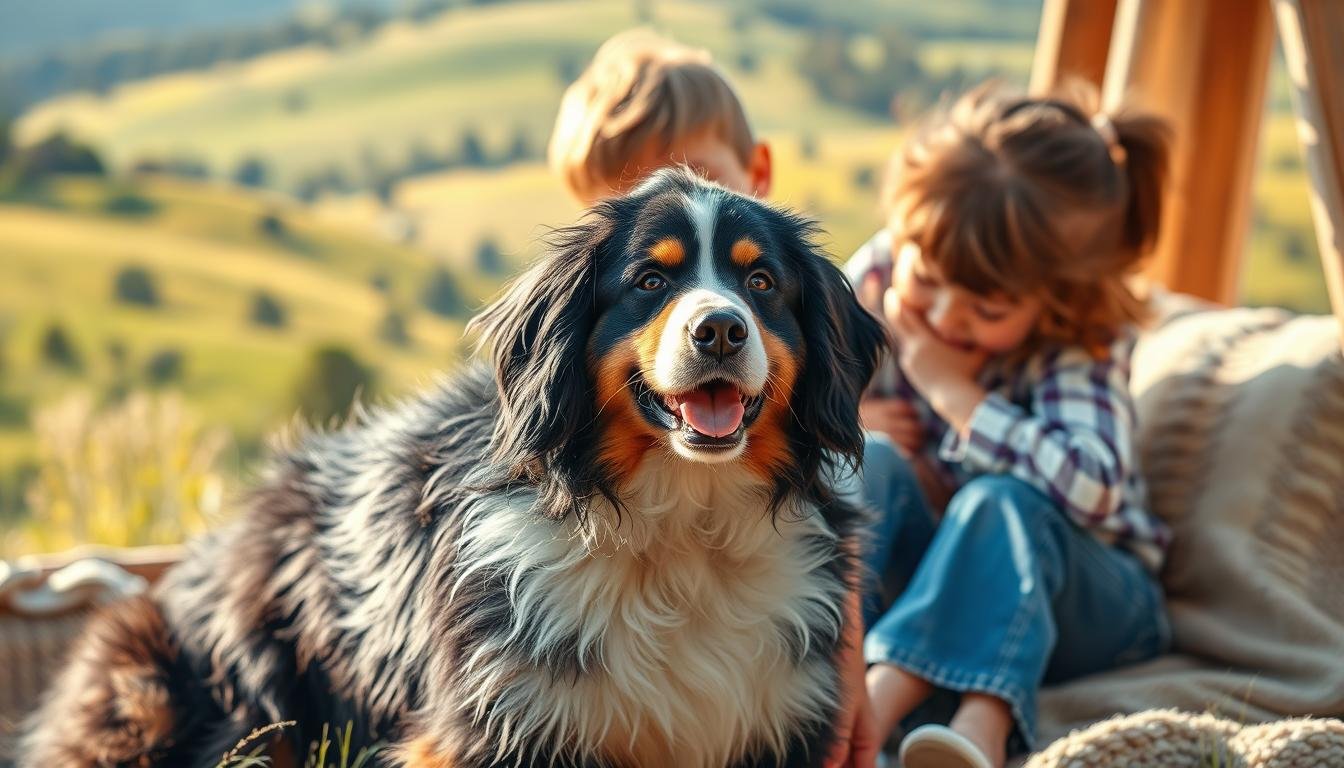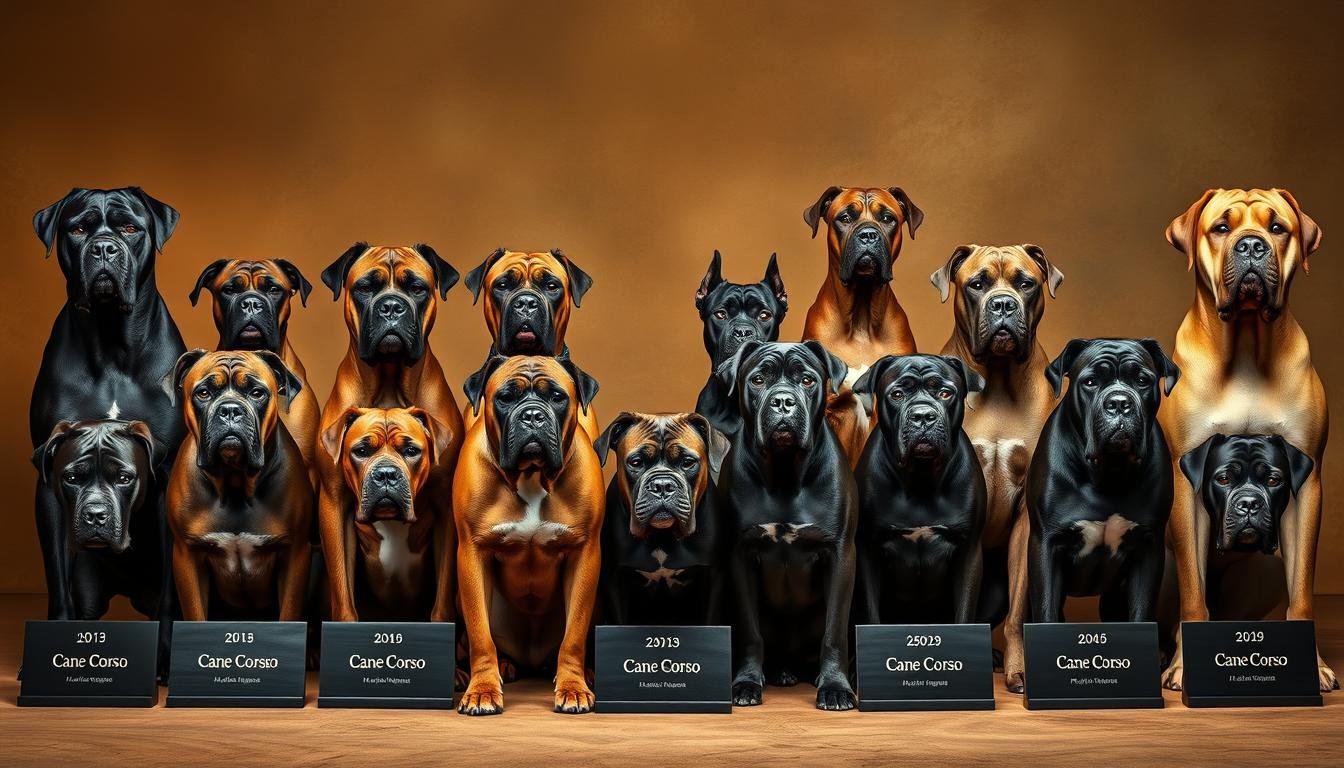There’s a special kind of magic that happens when a four-legged friend becomes the glue holding a household together. We’ve felt it firsthand—those quiet moments when our pup rests their head on a child’s lap, or the way they turn a chaotic afternoon into a calm cuddle session. It’s no wonder families across the U.S. are smitten with these gentle, tricolor-coated companions.
What makes these gentle giants so irresistible? Maybe it’s how they balance strength with tenderness, like a living teddy bear who moonlights as a watchful guardian. Or perhaps it’s their knack for reading the room—they’ll playfully chase a ball with endless energy, then switch to “therapy mode” when someone needs comfort. For households with kids, they’re the ultimate playmate, handling tiny hands and impromptu tea parties with saint-like patience.
We’ve watched ours transform from clumsy puppies into confident family members who seem to understand their role intuitively. They don’t just share our homes—they shape our routines, our inside jokes, and even our holiday card photos. And let’s be honest: there’s nothing quite like coming home to a wagging tail that could power a small wind turbine.
Key Takeaways
- Tricolor coats and calm confidence make these dogs natural family magnets
- Gentle temperament shines during playtime and quiet moments alike
- Perfect balance of protective instincts and affectionate lap-dog tendencies
- Thrive in homes where they’re treated as full-fledged family members
- Low-maintenance grooming despite their striking appearance
- Excel at building bonds that go beyond typical pet-owner relationships
Understanding Our Adorable Breed
Behind every wagging tail lies a story centuries in the making—ours just happens to involve Alpine peaks and a professor’s keen eye. Let’s dig into the rich tapestry that shaped these four-legged legends.
History and Origins of Mountain Dog Breeds
Picture 19th-century Swiss dairy farms, where greater swiss mountain dogs earned their keep as multi-tasking marvels. These powerful companions didn’t just carry milk carts—they hauled entire livelihoods. Professor Albert Heim, a geology expert with a soft spot for fuzzy colleagues, rescued the breed from near extinction in the 1900s. Talk about academic credentials!
Three fascinating facts about their heritage:
- Originated from mastiff-type dogs brought by Roman invaders
- Served as living alarm systems for remote mountain communities
- Could out-pull most modern pickup trucks (though they prefer belly rubs to heavy labor now)
Distinctive Traits of Short Hair Bernese Mountain Dogs
While their cousins sport flowing locks, our favorites rock the practical low-maintenance look. That sleek coat isn’t just fashionable—it’s nature’s perfect snowsuit. Watch them trot through winter weather like they own the Alps, then shake off snowflakes with a single dramatic shudder.
What truly sets them apart:
- Muscular frames hiding marshmallow-soft personalities
- Distinct tricolor patterns serving as natural name tags
- Eyes that communicate better than most teenagers
Essential Care Guidelines for Your Short Hair Bernese Mountain Dog

Keeping our four-legged friends thriving requires equal parts science and devotion. We’ve discovered that their care routine becomes second nature—like memorizing a favorite song’s lyrics—once you understand their unique needs.
Nutrition and Feeding Schedules
Mealtime for our greater swiss mountain pals resembles a carefully choreographed dance. Puppies demand 3-4 daily meals—think of them as furry food critics sampling multiple courses. Adults transition to twice-daily dining, though we’ve learned portion control matters more than their pleading eyes suggest.
Choosing AAFCO-approved food feels like solving a delicious puzzle. Their impressive size means we measure kibble like pharmacists dispensing medicine—every ounce impacts joint health and energy levels. We’ve become masters at blending nutrition with portion sizes that keep their powerful bodies lean.
Managing Health Concerns and Regular Checkups
Our veterinary calendar stays busy monitoring breed-specific quirks. Epilepsy often surfaces between 1-3 years, making puppyhood feel like a high-stakes detective game. Regular eye exams catch issues early, while preventive measures for GDV turn dinner routines into life-saving rituals.
We schedule checkups like clockwork, knowing these swiss mountain dogs average 8-11 years of loyal companionship. Joint supplements and weight management became non-negotiables—their sturdy frames deserve proactive care. Building trust with vets who speak “large breed” fluently makes all the difference when questions arise.
Effective Grooming and Coat Maintenance
https://www.youtube.com/watch?v=SIDE_t4NEbw
Grooming our sturdy companions combines practicality with bonding time—think spa day meets team sport. Their wash-and-wear coat lives up to its name, though “wear” might better translate as “distribute generously across every upholstered surface.”
Brushing Techniques and Bathing Tips
We’ve perfected the art of fur management using undercoat rakes during seasonal shedding marathons. A rubber curry brush becomes our secret weapon for daily upkeep, massaging skin while collecting loose hairs before they colonize the couch. Baths happen quarterly unless mud puddles demand emergency interventions.
Pro tip: Use lukewarm water and dog-specific shampoo to preserve natural oils. Those striking tricolor markings stay vibrant when we towel-dry thoroughly, avoiding blow-dryers that could irritate sensitive skin.
Attention to Eyes, Ears, and Nail Care
Weekly eye checks prevent minor irritations from becoming dramas. We gently wipe corners with vet-approved solutions, watching for redness that might signal hidden issues. Ears get the cotton ball treatment after baths—dampness loves to throw parties in floppy ear canals.
Nail trims double as trust-building exercises. The click-clack test on hardwood floors tells us when it’s time for the grinder. Three-minute sessions with plenty of treats keep everyone’s nerves (and paw pads) intact.
Training and Family Integration Strategies

Training a powerhouse breed requires equal parts strategy and laughter. We approach every session like a collaborative comedy show—where treats replace punchlines and mishaps become teaching moments. The secret? Working with their independent spirit rather than against it.
Building Bonds Through Positive Reinforcement
Our greater swiss mountain companions turn training into a tail-wagging game show. We keep a treat pouch holstered like six-shooters, ready to reward desired behaviors. This approach works wonders for leash manners—critical given their strength could tow a Mini Cooper.
| Technique | Benefit | Pro Tip |
|---|---|---|
| Clicker Training | Sharpens focus | Pair with high-value treats |
| Socialization Walks | Reduces alert barking | Start before 16 weeks |
| Name Recognition | Strengthens recall | Use different tones for commands |
Early exposure to children and strangers helps these gentle giants distinguish between actual threats and pizza delivery folks. We introduce novel experiences gradually—think skateboards before snowplows.
Mental Gymnastics for Working Dogs
Boredom turns these intelligent dogs into furry Houdinis. Our solution? Channel their heritage through modern challenges:
- Food puzzles that simulate Alpine treasure hunts
- Tug-of-war sessions with rules (release command required)
- Backyard agility courses using garden tools
Family participation transforms drills into bonding rituals. Even toddlers can practice “sit” commands—though the swiss mountain dog usually complies before the toddler does. Through consistency and humor, we’ve created four-legged diplomats who charm guests while maintaining watchful eyes.
Seasonal Care and Lifestyle Adjustments

Living with these four-legged meteorologists means learning to read nature’s cues through their behavior. Their needs shift with the seasons as dramatically as holiday decorations in a big-box store.
Dealing with Shedding Peaks and Temperature Changes
Spring transforms our homes into swirling snow globes of fur. We’ve mastered the art of coat maintenance using undercoat rakes that could double as agricultural tools. Summer brings strategic planning—morning walks before pavement turns into frying pans, and kiddie pools stationed like emergency cooling stations.
| Season | Focus | Pro Tips |
|---|---|---|
| Winter | Outdoor activity | Use paw wax for ice protection |
| Summer | Heat management | Freeze broth cubes as cooling treats |
| Spring/Fall | Shedding control | Daily 5-minute brush sessions |
Their double-layer insulation system works both ways—trapping warmth in January and reflecting heat in July. We never clip their natural armor, though we’ve considered renting industrial fans during heat waves. Cold weather turns them into snowy playground enthusiasts, while humidity transforms them into expert floor-vent locators.
Year-round care means swapping boots for sunscreen depending on the forecast. We schedule vet checkups before extreme temperatures hit, ensuring their health stays as consistent as their shedding schedule. Through trial and error, we’ve learned to celebrate each season’s unique joys—even if it means wearing lint rollers as fashion accessories.
Conclusion
Every swipe of a shedding brush and every muddy pawprint tells a story of devotion. These four-legged historians carry centuries of Alpine heritage in their DNA, yet fit into modern homes like they were born for suburbia. Their recognition by the AKC and Canadian Kennel Club isn’t just paperwork—it’s a badge of honor for a rare breed that’s mastered the art of being both working partner and couch connoisseur.
Through the Greater Swiss Mountain Dog Club of America, we’ve discovered a community as sturdy as the dogs themselves. New owners quickly learn what we’ve known for years: that tricolor aren’t just decorative, but roadmaps to a complex temperament blending vigilance with vulnerability.
Whether you’re drawn to their strength or disarmed by their comic ear flops, one truth remains. These companions rewrite the definition of family—proving that sometimes, the best life lessons come on four paws, wrapped in a package approved by every major from here to Switzerland.




